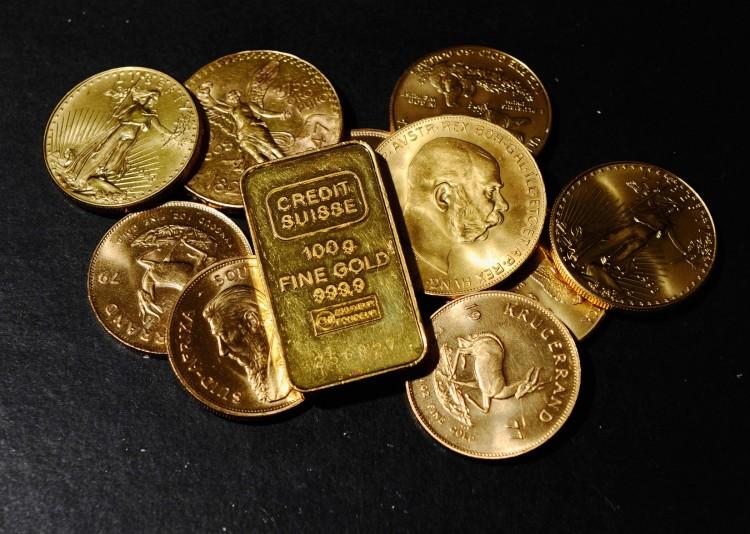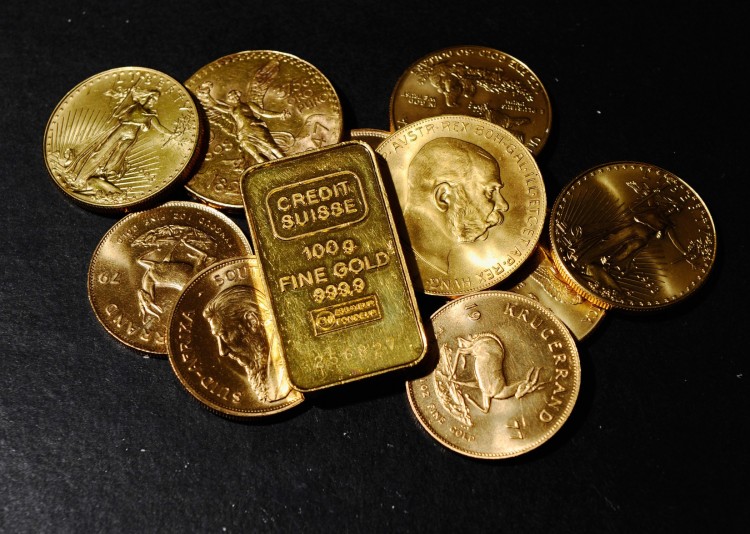Gold has been a lure for many investors because of the belief that gold will hedge against inflation or deflation, protect wealth during financial calamities and economic or political upheaval, and insure against becoming poverty-stricken.
“The debate over the prospects for gold resembles in some sense the parable of the six blind men and the elephant. Different perspectives, different models, lead to different insights,” suggests a revised Aug. 3 study about gold by Claude B. Erb and Campbell R. Harvey.
Those bullish for gold ignore the fact that gold does not earn an income or pay a dividend. The rise or decline of the gold price depends on the supply and demand of this commodity.
“Gold is a great hedge against ‘black swans’—unexpected and catastrophic financial events. But when times are good, investments in gold typically go bad,” a September 2011 article on the Kiplinger website states.
Market experts suggest that when the world experiences good economic times, gold prices will come to a standstill and even lose value. For example, in the 1980s and 1990s, the economy was mostly thriving, but gold prices started to decline in 1981.
According to Kitco, historical yearly averages for gold peaked at $613 in 1980 and then plunged to $460 in 1981, sliding further to $376 in 1982. The annual average moved up and down marginally over the following years, reaching its highest at $446 for 1987 and bottoming at $279 in 1999. After 2000, the annual cumulative average gold price kept edging up, climbing above $1,000 in 2010.
During upheaval and deteriorating economic times, gold prices rise significantly, which can be seen in the historical gold price movements since 2008. The annual cumulative gold price average was $872 in 2008 but has doubled since then, with the annual average standing at over $1,649 on Sept. 24.
“When world economies are stable and investment returns in stock and bond markets appear attractive, gold simply can’t compete and its price tends to languish. … Its price tends to move in the opposite direction of stock prices,” the Kiplinger article suggests.
Fallacy of Gold as Hedge Against Inflation
“In the past, when the real price of gold was above average, subsequent real gold returns have been below average. As a result investors in gold face a daunting dilemma: 1) seek inflation protection by paying a high real gold price that almost guarantees a decline in future purchasing power or 2) avoid gold and run the risk of a decline in future purchasing power if inflation surges,” according to the Erb and Harvey study.
Research has shown that gold is not valuable for dodging inflation in the long- or short-term, and there are a number of economic causes. The belief that gold is a hedge for inflation is mostly a figment of the imaginations of investors who listen too closely to advice by gold investment gurus.
“There is some other economic force, perhaps a fear of inflation,” the Erb and Harvey study suggests.
When viewing gold as an inflation hedge, one needs to review increases in inflationary data and compare it to increases in gold prices. In short, should inflation increase by 15 percent for example, then gold should increase by the same amount.
The study compared the U.S. Consumer Price Index (CPI) to gold prices and found no connection, as the price of gold fluctuated extensively around the CPI line and is far from the CPI number.
“If gold were a perfect short-term hedge of inflation then the real price of gold should be a constant and exhibit no variability,” the Erb and Harvey study states.
Another argument centers on gold being great as a currency hedge. For this argument to be true, the price of gold should increase by 5 percent when the U.S. dollar decreases by 5 percent, for example. Apparently, the argument for gold as a currency hedge doesn’t make sense, as in numerical terms, one country in the equation needs to have a zero inflation rate.
“In every case, the evidence advanced by Erb and Harvey strongly refutes the pro-gold argument. In fact, by the time Erb and Harvey are done, there remain only two possible investment reasons for direct ownership of gold: (1) as a risky ’momentum' play; and (2) as a hedge against the remote risk of hyperinflation,” according to a July 31 article on the Advisor Perspectives website.
Cautioning Against Investing in Gold
“While gold appears to be overvalued, that does not mean it cannot go higher or stay overvalued for a prolonged period of time. Gold bears should remember the old Keynes quote, ‘The market can remain irrational longer than you can remain solvent,’” an Aug. 20 article on the Seeking Alpha website states.
Those enthusiastic about gold or “gold bulls” must consider that even if gold prices continue to rise for a while, they eventually will come down, and it is not prudent to invest when the price of gold has reached unexpected heights. Gold bulls must be clear that the earnings from holding gold come only from changes in the gold price and not from earning dividends.
Gold “is bought for completely speculative reasons in the short term. Over the long term, its returns are typically lower than both bonds and stocks. This proves especially true if you are unlucky enough to purchase it during a peak,” according to the Seeking Alpha article.
Governments Buying Gold
“The open secret in the financial world is that governments discourage the use of gold as money for its citizens, but in fact they trade in it through their central banks and treasuries,” according to a Sept. 5 article on the Enterprising Investor website.
Central banks have significantly increased their gold purchases. During the first half of 2012, central banks bought 254.2 metric tons, 25 percent more than during the same period in 2011, according to the World Gold Council’s second quarter “Gold Demand Trends” report.
To reduce its foreign exchange reserves, Russia increased its gold bullion supply by 22.3 metric tons between April and June, accumulating 920 metric tons of gold to date and accounting for about 9 percent of its total reserves.
The National Bank of Kazakhstan and the National Bank of Ukraine also increased their gold purchases, while South Korea increased its gold holdings by 56 metric tons since mid-2011.
Investment advisors and gold market researchers conclude that emerging market central banks are afraid to hold all their reserves in the U.S. dollar or the euro.
“As Western central banks contemplate more money printing, emerging market central banks have been turning in record amounts of dollars and euros held as currency reserves to buy gold as ‘official sector’ purchases have surged,” according to another recent Seeking Alpha article.
As of September, the United States is No. 1 in gold holdings with 8,133.5 metric tons of gold. Germany and the International Monetary Fund, with 3,395.5 metric tons and 2,814 metric tons respectively, are the second and third largest holders of gold.
“Gold is liquid and not correlated closely to any other asset class, not even to its own supply demand equation. United States, Germany and France hold more than 70% in gold in their total foreign reserves,” the Seeking Alpha article states.
The Epoch Times publishes in 35 countries and in 19 languages. Subscribe to our e-newsletter.






